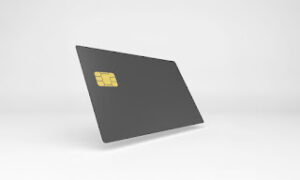From communication tools to project management platforms, SaaS applications are designed to make life easier for users by providing them with innovative and efficient solutions. Today you will discover key practices to achieve a successful design.
Understanding the Importance of SaaS Interface Design
SaaS design is about creating an application that delivers a seamless experience to users, encourages engagement, and supports business objectives. So users get a user-friendly, easy-to-navigate, and intuitive app. A well-designed SaaS product creates a competitive advantage for a business.
The first and most important element is user experience. A great user experience can make all the difference in determining whether a user stays engaged with an application or decides to seek an alternative. This is why budgets for testing and user research are increasing.
Another important factor to consider is scalability. We need to adapt SaaS apps to meet growing business and market needs. This is essential to design products with scalability in mind. A great application should be able to handle increased demand without compromising performance or user experience.
The Role of SaaS in Today’s Business Landscape
SaaS has become an essential part of business operations. It offers access to advanced technologies that may be costly to develop internally. Thanks to such technology, users use apps anytime, anywhere, and on any device. This level of accessibility and convenience makes SaaS a highly desirable solution for businesses.
SaaS offers a significant advantage: it enables businesses to concentrate on their core strengths. By entrusting certain operational tasks to SaaS providers, businesses can allocate their resources to what they excel at. This can result in enhanced productivity, increased efficiency, and ultimately, higher profitability.
Key Benefits of Effective SaaS UX/UI Design
Implementing an effective SaaS UX/UI design can yield numerous benefits for businesses. Reducing operational costs, boosting staff productivity, increased customer satisfaction are all possible results of using such platforms.
UX/UI design is important. Businesses get apps that are not only effective but also enjoyable to use thanks to the high-quality user experience and scalability. With the right design approach, businesses can unlock the many advantages of SaaS, including heightened productivity, enhanced efficiency, and increased profitability.
Establishing a Solid Foundation
The foundation of any successful SaaS interface design strategy is to identify your target audience, define clear goals and objectives and conduct thorough market research. This means mapping out the needs and wants of your target audience and understanding the market sufficiently to craft a product that primes the SaaS application for success from the get-go.
Identifying Your Target Audience
Understanding your target audience is a fundamental aspect of UX/UI design. If you know everything about your users, their challenges, and their expectations, you can create a product they will love. It is crucial to grasp the demographics and psychographics of your audience to provide features that align with their needs and desires.
For instance, if your SaaS application caters to small business owners, it is vital to identify their pain points and what they require for business growth. This might involve incorporating features like invoicing, inventory management, and customer relationship management tools. Conversely, if your SaaS application targets creative professionals, focusing on features such as collaboration tools, project management, and time tracking would be beneficial.
Defining Clear Goals and Objectives
To achieve anything worthwhile, you must have clear goals and objectives – UX/UI design for SaaS is no exception. Clear goals help to provide direction for the entire design process while also ensuring that the final product is aligned with a business’ needs. The objectives serve as actionable steps that help to achieve the business goals, which in turn help in achieving the product goals.
Let’s consider an example: if your SaaS application aims to support the growth of small businesses, your objectives may encompass enhancing revenue, boosting customer satisfaction, and minimizing costs. You should focus on improving user experience and optimizing the application for mobile devices.
The Connection Between UX and UI
You must have excellent UX to control whatever happens within the UI, both of which require the designer to prioritize user needs and expectations. The primary goal for a design team should be creating an intuitive interface that provides seamless interactions that aid in reducing the user’s cognitive load.
Essential UX Design Elements
UX design elements should help users to achieve their goals and to complete their tasks with your app. These include navigation, information architecture, wireframes, and user flows. For instance, designing an application such that a user with some disability is enabled to execute a task can be a major plus to the application.
The Importance of Modular Design
Modular design entails developing functional components that can be utilized across various sections of an application. It facilitates the scalability of the application to cater to diverse user requirements and accommodate future changes effectively. This approach not only enhances scalability but also emphasizes flexibility, allowing the product to adapt to dynamic market demands.
Adapting to Changing User Needs
Market needs and user expectations can change fast and unexpectedly. So by designing a connector framework that can integrate with other SaaS applications, the designers create a scalable architecture that solves current problems while also adapting to future changes.
Conclusion
SaaS applications are created with the aim of simplifying users’ lives through innovative and efficient solutions. Achieving successful design involves recognizing the significance of good design, establishing a strong foundation, and implementing UI and UX principles that shape user interactions with the application. Additionally, the design of the application should be flexible enough to scale and seamlessly adapt to evolving user requirements.



































